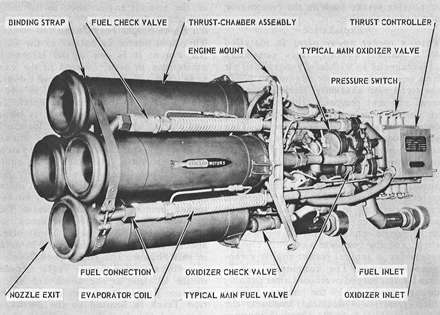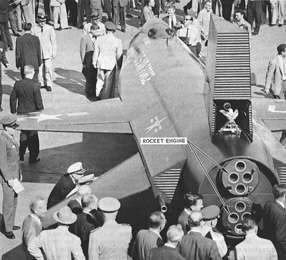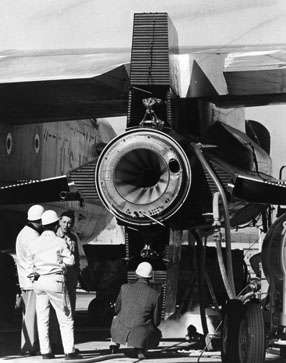His Bell X-1 was a rocket engine–powered aircraft, first conceived in 1944, and designed and built in 1945. In his successful attempt to break the sound barrier, he reached Mach 1.06 (700 miles per hour, or 1,100 km/h), but by no means had the X1 reached its limits, because a year after, it achieved a speed of nearly 1,000 miles per hour (1,600 km/h).
It should be noted that some sources list another man to first break the sound barrier: German test pilot Heini Dittmar, who on 6 July 1944 in Messerschmitt Komet Me 163B V18 would have reached an even higher speed than Yeager, 1,130 km/h (700 mph), but whether he flew high enough to make the flight supersonic is unclear. The speed of sound, commonly referred to as Mach 1, varies with altitude (actually, rather the temperature at particular altitude) and is highest at sea level, where Mach 1.0 equals about 1225 km/h (761 mph). At 30000 ft Mach 1.0 is reached much faster, at 1091 km/h (678 mph). However, German records do not mention a sonic boom during Dittmar's flight, and in any case by that time in the war they probably weren't interested in breaking records.
You can get some idea of what it must have been for Yeager and colleagues to attain hitherto unmatched (manned) speeds in this video clip from the movie The Right Stuff:
The Bell X1's engine was Reaction Motors's XLR11, company designation RMI 6000C4, the first liquid-propellant rocket engine developed in the US. It used ethylalcohol and liquid oxygen as propellants and generated a maximum thrust of 6,000 lbf (27 kN). Each of the four combustion chambers produced 1,500 lbf (6.7 kN) of thrust. The XLR11 was not throttleable but each chamber could be turned on and off individually. At the 0:18 mark in the video above you see the character playing Yeager turning all four of them on simultaneously. One wonders about the shocks to the structure and the implications of the asymmetrical thrust in case of individual turning on and off. I suppose that when using only two of the four, pilots were advised to use either the horizontally arranged thrusters or else the vertical ones. (It should be noted that the engine powering the Me163, the Walter HWK 509, could be throttled).

Pending development of a more powerful engine, in 1959 and 1960, a pair of XLR11-RM-13's mounted on top of one another were used as an interim power plant for the first X-15's. These XLR11's were boosted to 2,000 lbf (8.9 kN) of thrust per chamber for a total of 16,000 lbf (71 kN = 2 x 4 x 8.9kN).

In NOV 1960, the combination was replaced by a single XLR99 engine, but at 67kN it produced actually less thrust than the 8 combustion chambers of the two XLR11's:

MFBB.
No comments:
Post a Comment